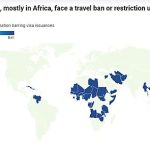
Caitlin Long tweeted over the July 4 weekend, “BIG NEWS for #fintech! A sixth US state—Idaho—is willing to charter uninsured, non-lending, 100% reserve banks that are eligible for Fed master accounts (the other states are CT, ME, NE, VT & WY). This trend could turn the ‘bank-as-a-service’ (#BaaS) model on its head!!!!!”
As Long explained to Ash Bennington on Real Vision, bankers are
playing this three-card monte game of, well, I’ll tell everybody that they can have their deposits back on demand. But I only keep seven cents of the deposits in cash. So, if more than 7 percent of the demand deposits get withdrawn in a short period of time, I’m in trouble. And that’s exactly what happened to all the banks that failed.
Responding to Long’s comments, Bennington made the point that today’s bank runs are not your grandpa’s bank runs:
I mean this is a really fundamental critique that you’ve just leveled right now against fractional reserve banking, against the current structure of liquidity transformation, as it’s called in the business. This idea that basically the banking system that we have is no longer fit or suited for the twenty-first century. That is a profound critique of where we are today.
Depositors are moving money to the large too-big-to-fail banks, but as Long explains:
The deposits at the cash at the large banks is only about ten cents. So, the delta, if you will, between the smaller banks is seven cents versus ten cents at the larger banks. You’re not getting that much more safety, because the larger banks aren’t sitting on that much more cash than the smaller banks are. It’s fundamentally an issue of fractional reserve banking to your point, and I think this is just going to continue to dodge, to haunt the regulators in the coming years.
She believes regulators will “be playing whack-a-mole against this because everybody has an expectation of internet speed user experience. And as they try to push everybody back to a bank branch, talk to a twenty-year-old—a twenty-year-old has never been in a bank branch and never written a check.”
The solution in Long’s mind is what she described in her tweet: “uninsured, non-lending, 100 percent reserve banks that are eligible for Fed master accounts,” or specialized payment banks or gateway banks that handle payments but cannot make loans and must hold 100 percent of their cash on deposit at the Federal Reserve.
TNB USA applied for a Fed master account in 2017. Matt Levine wrote an opinion column for Bloomberg about the narrow bank TNB receiving a provisional banking charter in Connecticut and setting itself up as a bank to do what Long described. The idea is not new and is, in fact, Rothbardian (without the gold and with the Fed).
As Blockworks explains:
The concept of “narrow banking” was the norm in the USA during the 19th century, up until the Banking Act of 1933 (also known as the Glass-Steagall Act), which created the Federal Deposit Insurance Corporation (FDIC).
Back then—note this was before the Federal Reserve System existed—narrow banks issued only short-term loans, typically for less than 80 days and backed by collateral or a guarantor.
The modern incarnation would be a bank which offers customers direct access to central bank money, thereby eliminating four types of risk: credit risk, duration risk, interest-rate risk and market risk.
However, when TNB went to the Fed in 2017 asking to open a reserve account, the Fed said no. TNB sued the Fed, arguing that the Fed’s rules require it to open an account for any qualified bank and that it is a qualified bank, but the Southern District of New York dismissed the suit.
As it is now, every bank lives in fear of a bank run. No matter how profitable, a bank engaging in fractionalized banking can be brought down by a bank run. As Caitlin Long told Ash Bennington on Real Vision: “Every bank has the proverbial sword of Damocles hanging over the head. That if there’s a rumor of a bank run, now we know within hours, the bank could go down. That’s not new, that’s always been there. What’s new is that it’s just sped up because of phones.”
What took weeks in the case of Washington Mutual’s collapse less than two decades ago, took just hours in the cases of Silicon Valley Bank, Signature Bank, and First Republic.
Ms. Long is attempting to disrupt the banking and crypto worlds with Custodia Bank in her native Wyoming. She is a Wall Street veteran and a graduate of Harvard Law School who is jousting with the Kansas City Fed to obtain a Fed master account.
What she knows is that as the world has gone from paper to digits:
Bank runs clearly are speeding up. And the impact of that is it’s revealing that the traditional banking system—it’s always been fundamentally unstable. But it’s even more unstable than folks had realized. And banks in general, as a result of the fact that the liabilities can be withdrawn a lot faster, are going to need to hold more cash.
Stijn Van Nieuwerburgh, the Earle W. Kazis and Benjamin Schore Professor of Real Estate at Columbia Business School—who believes banks are severely undercapitalized based upon decreased asset values (as opposed to what Jerome Powell says)—told Mr. Bennington in another Real Vision interview that regulators may have to allow banks to slow depositors from being able to withdraw demand deposits for certain amounts of time when banks are under stress. That was known as a bank holiday, which Franklin Delano Roosevelt instituted when he took office in 1933—the year of legislation that started this mess.
Of course, the creation of the FDIC was to stop all the bank holiday nonsense. However, the deposit insurer is having trouble keeping up with skittish tech-savvy depositors armed with cell phones who will move funds first and ask questions later. “Capital controls for demand deposit withdrawals is something that is freaking people out,” Bennington said, responding to Van Nieuwerburgh.
Scott Rechler, the chief executive officer of real estate giant RXR and a Federal Reserve Bank of New York board member, says five hundred to a thousand smaller banks could disappear because of insolvency or consolidation. If his prediction comes true, lots of people will freak out.
Bloomberg’s Patrick Clark writes that things could work out “if lenders can hold on long enough for borrowers to find their next mortgage. The problem comes when lenders are forced to realize current values. In other words, when they stop pretending and can’t keep extending.” Gavriel Kahane, a managing partner at Arkhouse Fund, responds to Clark: “What happens then is really scary.”
Scary indeed because depositors are one click away from running.






